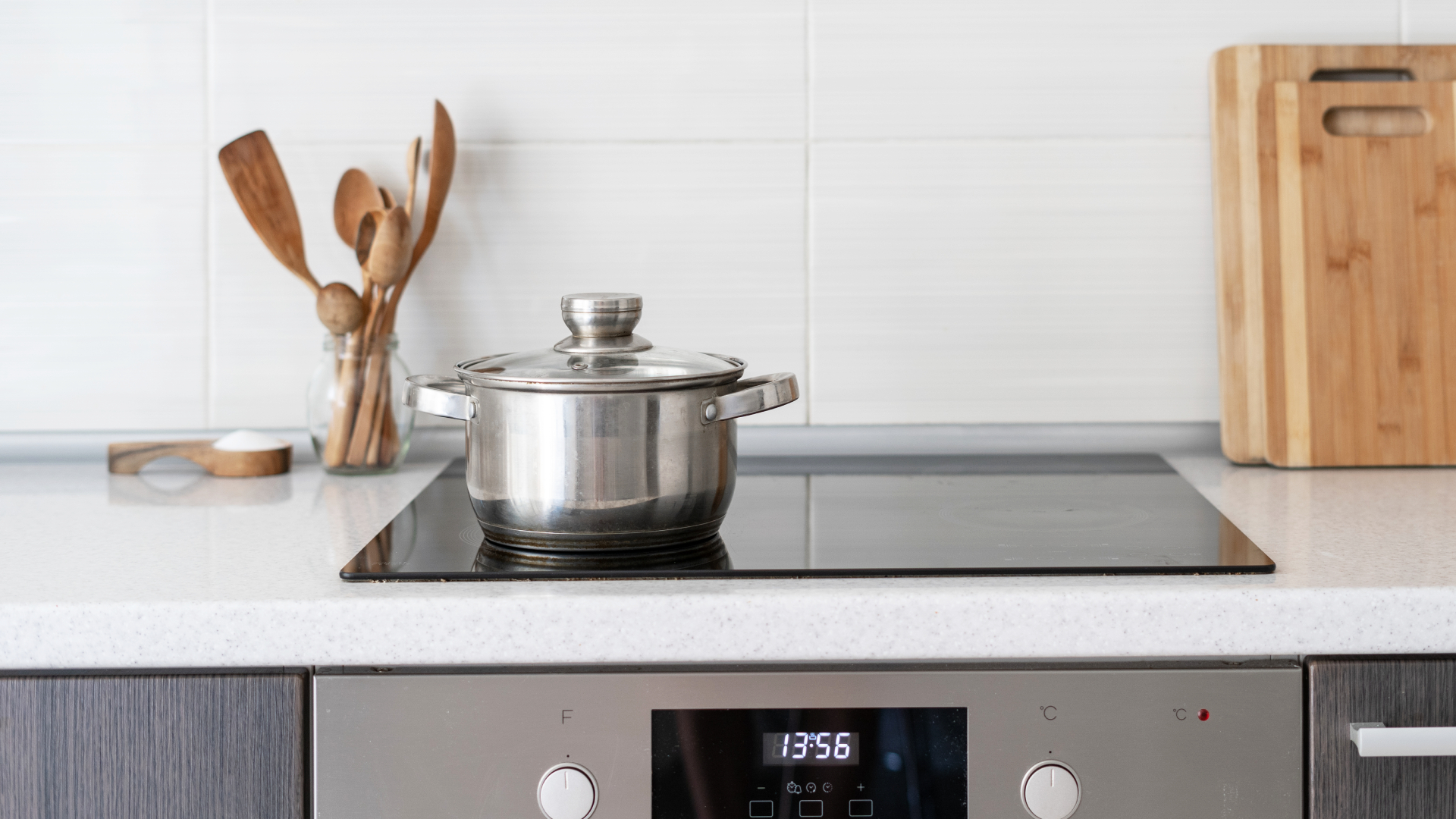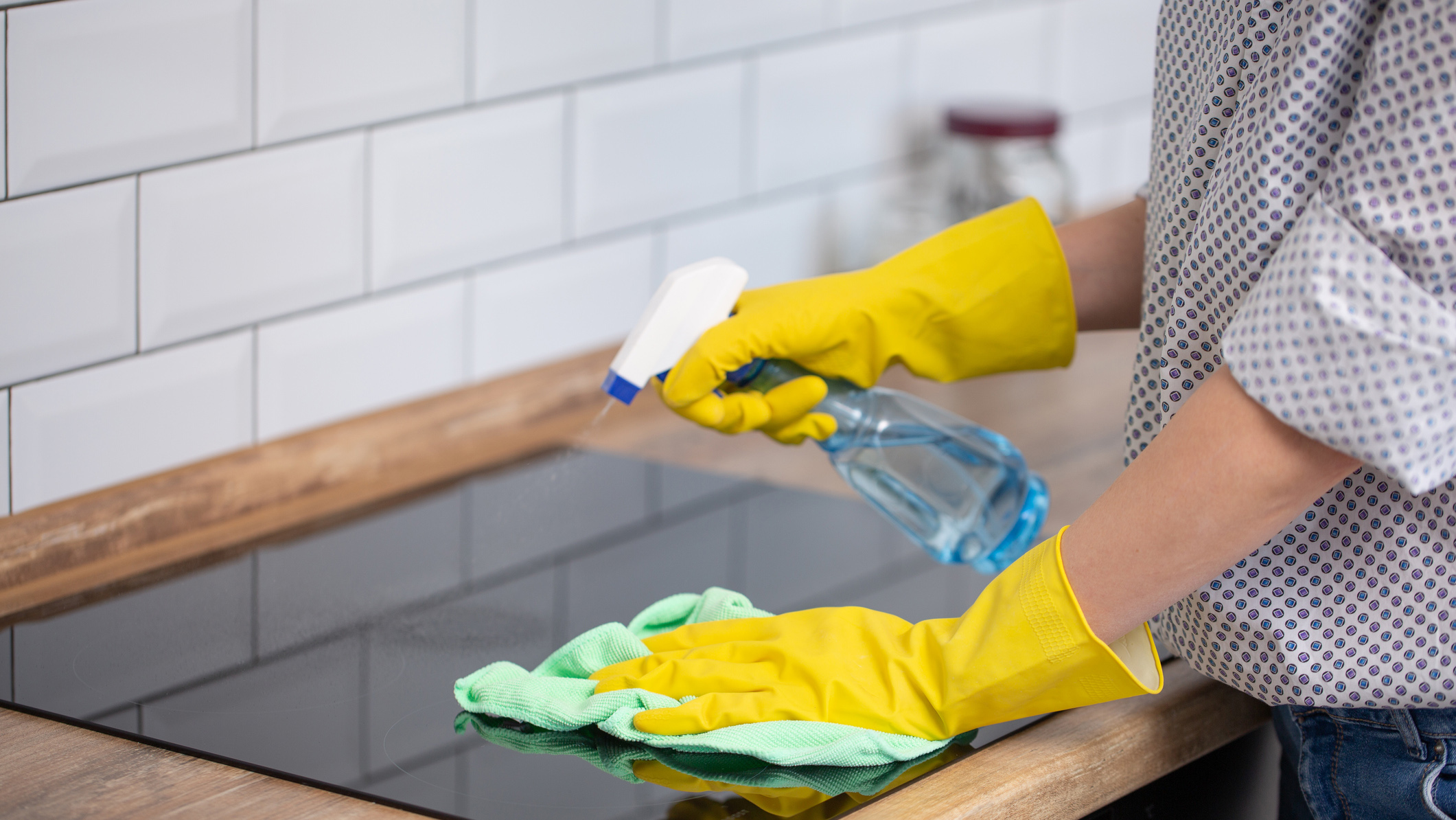how to clean a glass top stove with baking soda and peroxide

(Image credit: Getty Images)
Working out how to clean a glass stovetop requires some research. A smooth, glass stovetop certainly looks sleek and stylish, but it will need a specialist cleaning routine to keep it at its best.
Before we look at how to clean a glass stovetop as part of your kitchen cleaning regime, it's important to remember that stoves should be completely cool before cleaning. Most glass-top stove brands have added a handy light that will indicate whether the surface is hot even after the ring has been switched off. This key safety measure will ensure that cleaning tools are safe to use without the risk of burning, melting, or catching fire. If you're planning a deep clean of any of your other kitchen appliances or floors, why not see our guides to the best steam cleaners and best oven cleaners on the market?
Why you shouldn't treat a glass stovetop like ordinary glass
Even though they are referred to as glass stovetops, you shouldn't think of them as glass when it comes to cleaning. Never use your regular, commercial glass cleaning product on your stovetop. These products commonly include ammonia, which can streak the surface of your stove. If in doubt, double-check the ingredients listed on the packaging and skip any formulas that contain ammonia.
Equally, you should also not treat your glass stovetop in the same way that you might a stainless steel stovetop, or a cast iron one, when it comes to cleaning. Handily, cleaning a glass stovetop can often be much easier than these other types of stovetops—as you'll see in our methods detailed below.
DIY cleaners to use when cleaning your stovetop
Depending on the current state of your glass stovetop, cleaning it doesn't have to be a difficult chore. In fact, all you need is about 20 minutes and a few common, semi-natural items from your own kitchen. So what do you need to have to hand before cleaning your glass stovetop?
- Vinegar—a natural antibacterial, this is a great natural ingredient to have to hand for a shorter stovetop clean.
- Baking soda—which will work magically to clean a glass stovetop for a fabulous natural shine—just be careful to use it gently so as not to scratch your hob. You can also use baking soda when working out how to clean an oven, how to clean a stainless steel sink or how to clean a dishwasher.
How to clean a glass stovetop
Cleaning a glass stovetop with vinegar for a quick weekly clean
For stoves that are in frequent use, perform this routine once a week. If you cook less often, opt for every other week or whenever you notice your glass top is looking dull or grimy. This simple cleaning method should make a considerable difference in your kitchen and will inspire you to keep up the effort.
- Put vinegar in a spray bottle and spray down the entire stovetop surface. Let it sit for a few minutes.
- Wipe down the stove with a damp rag to remove any surface particles and debris.
- Sprinkle baking soda evenly over the entire surface of your glass stovetop.
- Wet a large towel thoroughly with hot water, wring it out and drape it over the surface of the stovetop. Let it sit for 15 minutes.
- Remove the towel and wipe down any stubborn spots with a non-abrasive sponge.
- Respray the surface with vinegar and wipe with a clean cloth.
- Buff dry with a soft cloth for a fabulous shine.
This is also a great way to clean the best portable induction hobs when out and about, most of which are made of glass.
Cleaning a glass stovetop with hydrogen peroxide for a deeper clean
This DIY cleaning solution also uses baking soda to tackle marks and is a great option for when you want to carry out a deeper clean. A little hydrogen peroxide and baking soda can go a long way—this powerful mix will shift tougher stains with ease.
- Make sure your glass stovetop is completely cool.
- Drizzle a 1/4 oz. of baking soda, 1/4 oz. hydrogen peroxide, and a few squirts of liquid dish soap directly onto your stovetop.
- Use a sponge to mix into a paste and wipe down.
- Remove any excess cleanser with a clean sponge or paper towel.
Hydrogen peroxide is also a good thing to have to have if you're working out how to clean mold—just be sure to use it carefully and with caution.

(Image credit: Getty Images)
How to remove stubborn burnt-on food
Sometimes, however, glass stovetops will stubborn, stuck-on food on them, that might have accumulated during cooking or overnight. So how should you clean up particularly difficult messes, all whilst ensuring that you don't do any harm to your delicate glass stovetop? The short answer is—don't be afraid to use a kitchen-safe razor blade:
- For best results, use a safe, single-blade razor with a plastic handle specifically designed for glass stovetop cleaning.
- Gently scrape off any excess food using the razor at a 45-degree angle.
- Then, clean the rest of the surface as per the above methods.
- You can also polish and buff the glass stovetop after scraping to ensure no marks are left behind.
Glass stovetop scrapers are also available at kitchen supply stores if you prefer to avoid razors.
- Minky Hob Scraper for $5.71/£3.85 at Amazon
Are commercial cleaning products safe?
When it comes to everyday cleaning, lots of store-bought brands are available specifically for glass stovetops, and these are generally safe and great for cleaning with. The cleaning aisle of your local market or hardware store will probably offer a wide variety of options.
Many popular brands offer soft scrub cleansers that you apply directly to your glass stovetop. These cut through grease and debris and all you need to do next is wipe clean with a damp cloth or sponge. You can stick to these commercial cleaners, or alternate with a DIY cleaner as above.
From daily maintenance to weekly deep cleaning, keep your glass stovetop looking great with these simple steps. To keep on top of your glass stovetop daily, use a spritz of a DIY solution of vinegar and water, or lemon and water, for a quick wipe-down at the end of each day, making hard, stuck-on food less of a hassle to clean up later on.

Amy Hunt is Life Channel Editor at womanandhome.com, having been with the brand since 2015. She began as the magazine's features assistant before moving over to digital as a News and Features Writer, before becoming Senior Writer, and now a Channel Editor. She has worked on either women's lifestyle websites previously too—including Woman's Weekly, Goodto.com, Woman, and Woman's Own. In 2019, Amy won the Digital Journalist of the Year award at the AOP Awards, for her work on womanandhome.com. She is passionate about everything from books, to homes, to food and the latest news on the royal family. When she isn't editing or updating articles on cleaning, homewares, the newest home gadgets, or the latest books releases for the website, she's busy burying her nose in a gripping thriller, practising yoga, or buying new homeware of her own.
how to clean a glass top stove with baking soda and peroxide
Source: https://www.womanandhome.com/homes/how-to-clean-a-glass-stovetop/
Posted by: harbershonserema.blogspot.com

0 Response to "how to clean a glass top stove with baking soda and peroxide"
Post a Comment